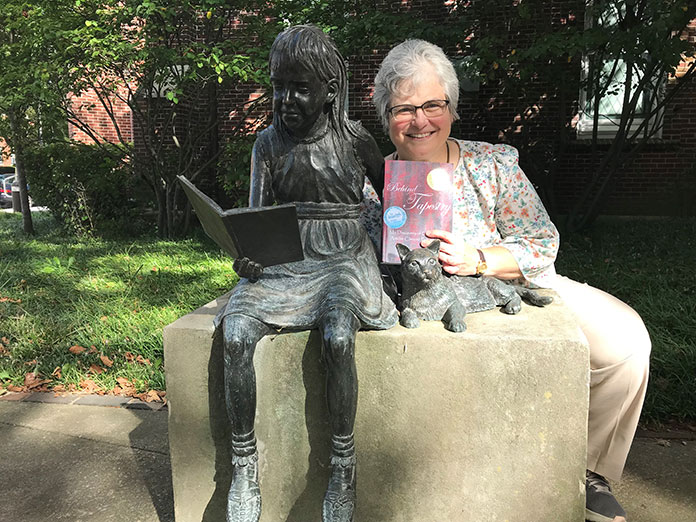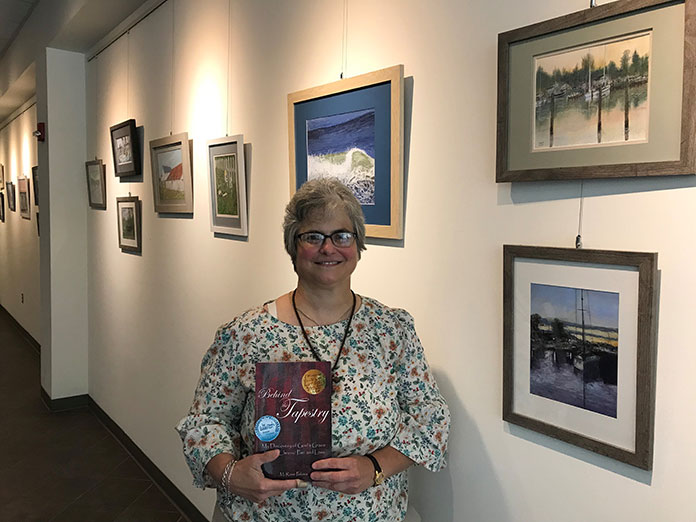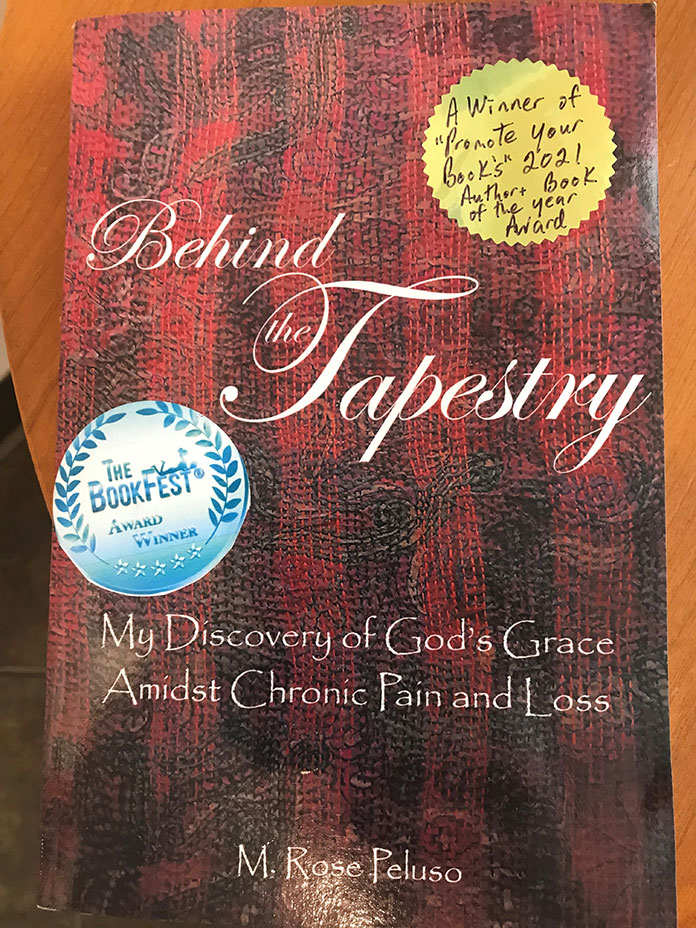
BERKELEY – Chronic illness is something most people don’t want to talk about, so M. Rose Peluso wrote a book about it.
Her book, “Behind The Tapestry,” is subtitled “My Discovery Of God’s Grace Amidst Chronic Pain And Loss.” It’s available in most online book markets. It chronicles a life dealing with serious issues while also working to become a nun. It’s a personal story but it appeals to a wider audience.
She suffers widespread, chronic pain from pudendal neuropathy, named after the nerve that runs through the pelvic floor. “If you’re having a horrible day, sitting is almost unbearable,” she said.
A chronic condition will take up a huge amount of your life. If you don’t have one, you just don’t understand how much it impacts everything. Lots of people don’t want to hear about illness, but Peluso won’t suffer in silence any longer.
She left her great job as a graphic designer and entered the convent in 1999. It’s a long process to become a nun, as you move up through the stations. She became a sister in 2002. The disease struck in 2001, and she recalled that it was soon after the attacks on September 11. She was praying for the victims when the burning sensation began.
“I remember being in the chapel and seeing the Lord and the Blessed Sacrament and said ‘OK, Lord, what changed?’”
That question would take a long time to answer.

“It’s typical for people to go years without a diagnosis,” she explained. It’s often a process of elimination. One test after another would rule something out as the months drag on. “You look very healthy but you feel pain.”
She changed names and some details in the book to protect the sisters. That might be for the best. Some of them weren’t very supportive. She was told “You’re not praying enough.” They didn’t think she deserved special considerations, such as a menthol seat to ease the pain.
Some, of course, were very supportive – but those weren’t the ones in roles of authority. The message was something that people with chronic conditions often face: “We don’t want to hear about it anymore.” She was encouraged to smile through it, even though her body made her want to cry.
“I had to suffer silently with my pain. It was more important to me to become a sister,” she said.
Peluso was born and raised Catholic, but religion wasn’t a huge part of her upbringing. “You went to church and you prayed when you wanted something like God was Santa Claus.” It wasn’t until a prayer meeting in the early 90s that unlocked the mission in her.
“I never felt like I fit in until I was called to religious life,” she said. Healing, in this sense, was spiritual as well as medical.
There was also a concept that you can offer up your suffering to God – you make that sacrifice to share the burden of someone else who is suffering. In this case, pain doesn’t have to be a stop sign on the road of life. It’s a redemptive power. You are easing the pain of someone else in the world.
There were a number of treatments over the years, including diet, prescriptions, injections, and back surgery. “It was a constant roller coaster of getting my expectations up,” she said. These plans didn’t even cure her; they just eased the pain for a bit.
Eventually, it was time to leave the convent.
“It was almost audible, like I could feel a hand on my shoulder, saying ‘You don’t need to stay here to love me.’ All of a sudden, I felt that heaviness go away.” However, she was in a difficult position. She gave up her belongings when she joined the sisterhood. The only clothing she had was her habit. She had no car and no money. She was 40 years old, with no health insurance and a chronic illness.
The church sent her off with $1,000 and she went home to live with her parents. She earned her Master’s and has worked in parishes, running CCD classes.
Unfortunately, the neuropathy started getting worse around 2013. She couldn’t work full time any more. She could still work part time to supplement Social Security (she didn’t pay into it when she was in the convent). She worked part time in a law office before getting laid off. She became a caregiver/companion for seniors.
She moved to the area, first in Whiting in 2016, then to Holiday City at Berkeley.
“This baby came to be in late 2015,” she said of her book. The impetus came from telling her story to people and them saying “You should really write a book.”
The purpose is not for money, or to be famous, but to help other people understand what life is like with a chronic disease. And if the reader has a chronic disease, to let them see the light at the end of the tunnel.

When it took years trying to get a diagnosis, it is absolutely important for someone in the same situation to know that they are not alone. Hopefully, this book will shine a light on pudendal neuropathy. People who have it – but don’t know it yet – might read this and have an “a-ha moment” when they recognize the symptoms.
People don’t like to talk about problems in the pelvic area so sufferers lack a support system. Sometimes, even doctors don’t listen. There is also less funding for research. The rate of suicide is far higher for those who have chronic pain.
“I’ll never say in a million years that it’s easy, but some of the best years in my life have been during the years where I’ve been suffering,” she said.
She wants to tell people “I’ve been there. I know that despair. They’re making breakthroughs. You have to hold on.”
For more information, visit authormrosepeluso.com/






